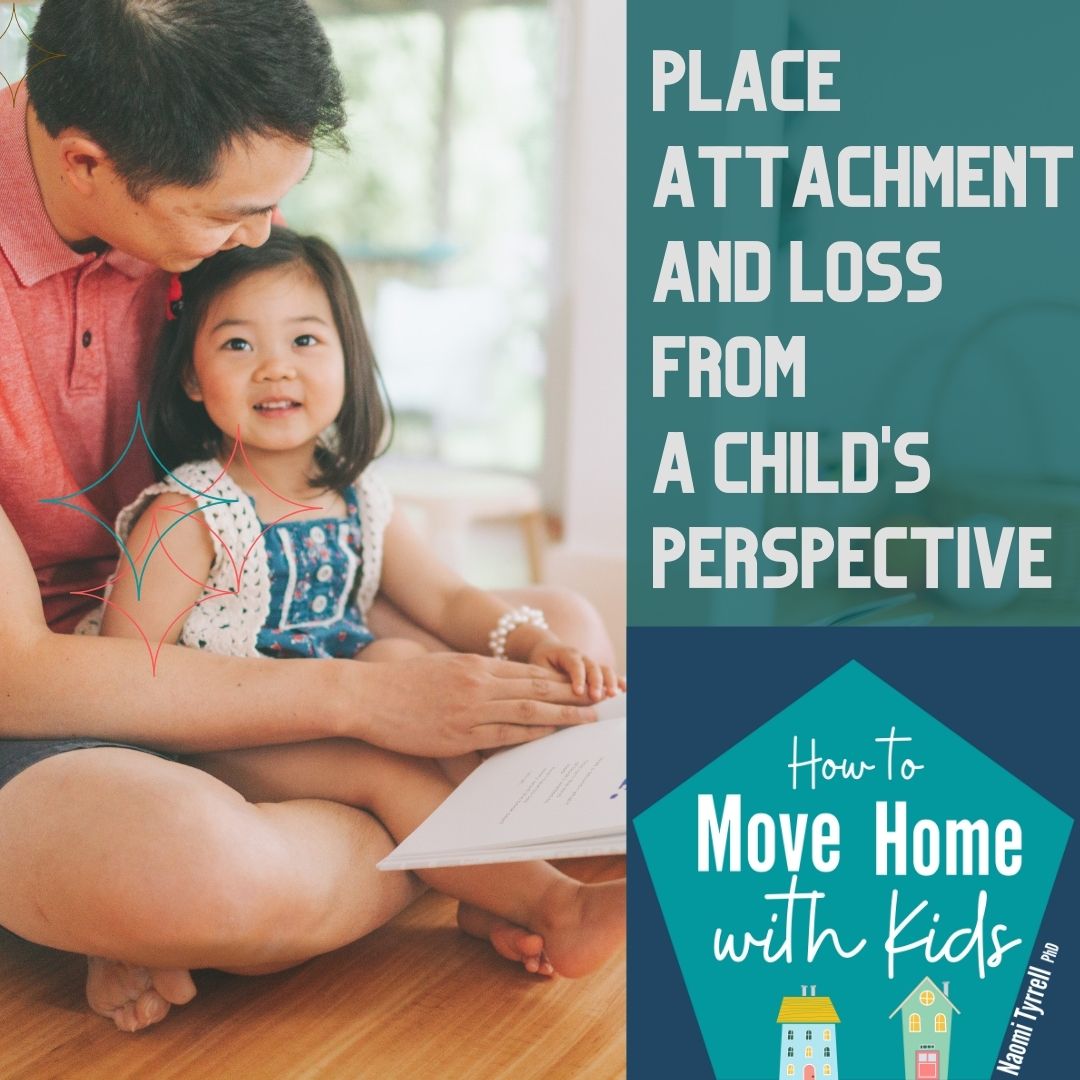Child development studies have rightly focused on the attachment children form to caregivers in the early stages of their development but researchers in the fields of human geography and child psychology now also highlight the strong attachments that children form to the space in which they live, which for many children is the first place they inhabit outside the sanctuary of the womb. Perhaps the most important aspect of a child’s relation to the space they inhabit to bear in mind when moving is that positive place attachment is always associated with experiences and memories, not the size and quality of the physical environment. Given children’s strong attachments to their home, I’ve put together some tips on helping your child with the loss they encounter when moving home. Give them timeMoving home is an upheaval to parents but to children this might be the single biggest change they have experienced in their life so far. Children process change and transition very differently to adults. Ever thought your child wasn’t listening to you, only for your child to respond to your question or conversation point three days later? Children have a different temporality to adults. Understanding your child’s psychological transitioning to a new place is crucial to being able to provide support for them. So, it is essential to give your child time to get used to the idea of moving home. Talk to them far in advance about moving home. Children’s books are often great in providing children with a narrative of the experience they are about to encounter. In relating to the characters in the book, they begin the process of empathy and understanding with the characters, which they can then utilise as tools of resilience and self-empathy when they then experience moving home themselves. Ask them how they feel about moving home, listen to them. If they feel anxious, or scared, allow them time to work through those feelings rather than trying to instantly turn negative feelings into positive ones, something we too often do as parents. Make time to acknowledge their feelings and talk about your own too. Allow them to GrieveMoving home might be one of your child’s first experiences of loss. It is important to let them grieve their old home. Try not to force a positive narrative if your child is feeling unhappy about moving home. Talk to them about what they feel they will be losing or missing out on, allow them to spend time with those thoughts with you. As with any grief, the state needs to be worked through. What will they miss? Talk about the memories you have created in that place with them, and the memories they have that do not involve you (a child’s bedroom comes alive when a parent leaves it!). Creating a picture book of the house with your children, with photographs and written memories creates a keepsake and the sense that they can take their ‘home’, which is built out of their experiences and memories, with them. Helping your child to recollect memories of the place they are leaving, and to develop stories about that place, will help them express what that place means to them. Offering rituals around the moving day will help to give a child a sense of closure. Don’t rush the final part of the move. Allow your child to say goodbye, to each room if they would like to, and alone if they would like to (and are old enough). Your child will have their own relationship to the place they are leaving; respect that relationship by allowing them to say goodbye in their own special way.
0 Comments
Leave a Reply. |
AuthorNaomi Tyrrell PhD Would you like to receive future blog posts by email? Sign up here.
Categories
All
|
|
|
Copyright © 2020-2023 NaomityrrellPhD All rights reserved
|
CallFollow |



 RSS Feed
RSS Feed



